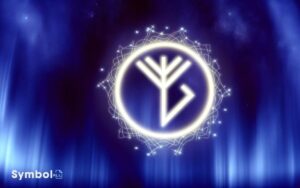Symbols to Use for Footnotes: Asterisk, Dagger!
In your writing, use footnotes to guide readers to extra information. Start with an asterisk (*) for main points, then a dagger (†) for secondary notes, and a double dagger (‡) for further commentary.
Use section signs (§) and parallels (||) for elaboration, and a pilcrow (¶) for deepening discourse. Numbers are great for organizing footnotes in a sequence, making your text easy to follow. Stick to these symbols for clarity.
Remember, starting with standard symbols helps keep your document accessible. Consistency and simplicity in your footnotes can elevate your writing. You’ll find mastering their use offers clarity and depth to your discourse.

Key Takeaways
Understanding Footnote Symbols
Navigating through academic texts, you’ll often encounter footnote symbols, marks that guide readers to additional information or clarifications tucked away at the bottom of the page.
These symbols serve as bridges, connecting specific parts of the text to additional details without cluttering the main body of your work. Understanding these markers is crucial for grasping the full context of what you’re reading or writing.
They’re not just random characters; each symbol has a purpose, leading you to insights that enhance your comprehension.
As you dive deeper into scholarly articles, reports, or books, you’ll realize that these tiny symbols hold significant value, making the dense information more accessible.
Recognizing and interpreting these signs correctly will sharpen your academic reading and writing skills, allowing you to navigate through complex literature with ease.
Traditional Symbols Explained
Delving into traditional symbols, you’ll find that each serves a unique role in guiding readers through a text’s layered meanings.
The asterisk (*) often marks the beginning, signaling the first footnote or a significant point needing clarification.
Following closely, the dagger (†) usually indicates a secondary note or provides additional insights.
When more references are needed, the double dagger (‡) steps in, offering a third level of commentary.
For further elaboration, symbols like the section sign (§), parallels ||), and the pilcrow (¶) are employed, each adding depth and detail to the discourse.
These symbols not only organize the footnotes in a hierarchical manner but also ensure that readers can navigate the supplementary information without confusion, enriching their understanding of the text.
The Role of Numbers
In addition to traditional symbols, numbers play a crucial role in organizing footnotes for ease of reference. You’ll find them incredibly useful for sequentially citing sources or annotations throughout your document. Numbers not only provide clarity but also enhance readability by guiding the reader directly to the relevant notes. For instance, using the sum symbol (Σ) can provide a clear and concise way to indicate aggregated references or highlight cumulative data points. Incorporating such mathematical symbols alongside numbered footnotes can further streamline complex documents while maintaining an organized structure.
This method allows you to track references efficiently, ensuring they’re easily located within the text.
| Number | Usage |
|---|---|
| 1 | First reference or note. |
| 2 | Indicates a second distinct reference. |
| 3 | Marks a third unique citation. |
| … | Continues in sequence for subsequent notes. |
Adopting numbers as symbols for footnotes offers a streamlined approach to documentation. It simplifies the process of cross-referencing, enhancing the readability and accessibility of your work. Stick to this orderly system, and you’ll ensure your footnotes are clear and well-organized.
Special Characters for Footnotes
Beyond numbers, you’ll encounter special characters that also serve as effective symbols for footnotes in scholarly writing.
These symbols include asterisks (*), daggers (†), double daggers (‡), section signs (§), parallels (||), and pilcrows (¶). Each character offers a distinct visual cue for your readers, guiding them from your main text to the corresponding footnote without confusion.
It’s essential to use these symbols consistently throughout your document to maintain clarity. Start with an asterisk and proceed in a logical sequence if multiple footnotes appear on a single page.
Remember, these special characters aren’t just decorative; they play a crucial role in organizing your document and making it easier for your audience to navigate complex information.
Best Practices for Symbol Usage
When using symbols for footnotes, it’s crucial to adhere to best practices to ensure your document remains clear and accessible.
Start with asterisks, daggers, and other standard symbols before moving to letters or numbers for additional references. This approach keeps your document tidy and understandable.
Always sequence your symbols in a consistent order throughout your text. This consistency helps readers follow your footnotes without confusion.
Remember, too, that simplicity is key. Don’t overcomplicate your footnotes with obscure symbols that might confuse your readers. Instead, stick to commonly understood symbols.
Lastly, ensure that each symbol’s corresponding footnote is clearly defined at the bottom of the page or document. This clarity aids in maintaining the flow of reading without unnecessary disruption.
Conclusion
You’ve seen how traditional symbols, numbers, and special characters play their parts in footnotes. It’s clear that each holds its place, ensuring clarity and reference integrity in your documents.
The truth? There’s an art to choosing the right symbol, one that balances tradition with readability. By following best practices, you’re not just adhering to norms; you’re crafting a seamless reading experience.
Remember, the power of an effective footnote lies not just in the detail, but in the symbol that leads the way.





